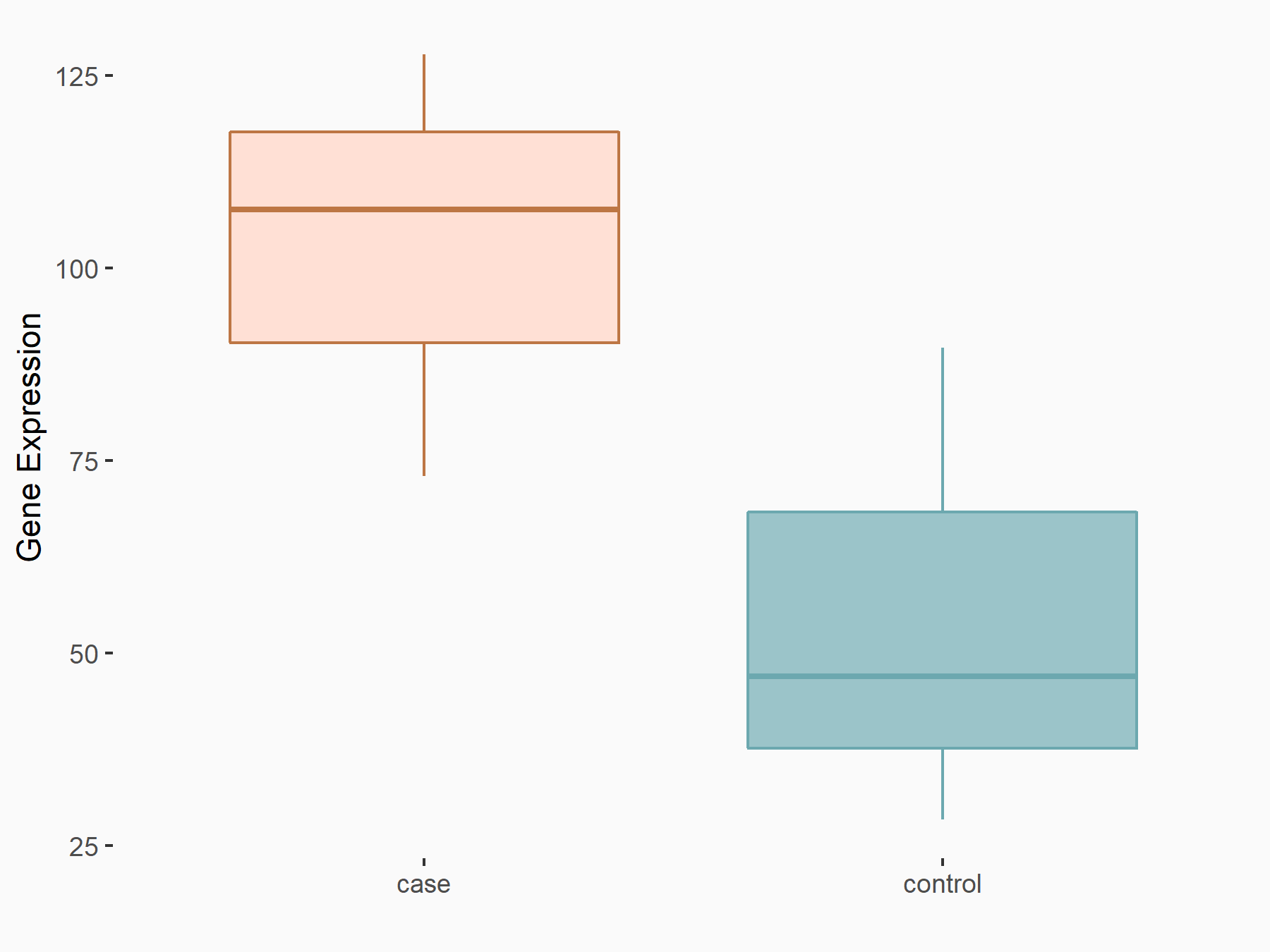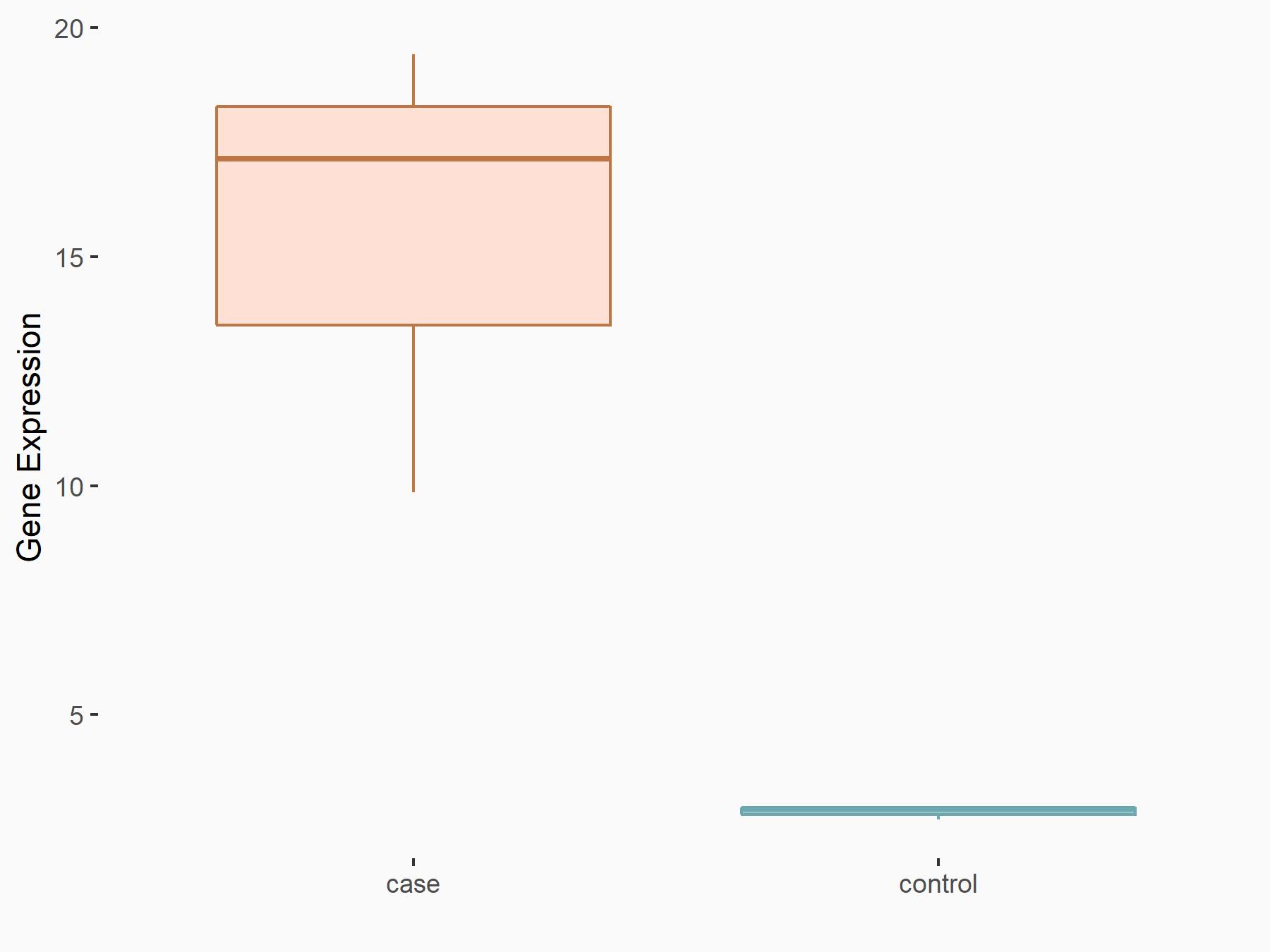m6A Target Gene Information
General Information of the m6A Target Gene (ID: M6ATAR00333)
Full List of m6A Methylation Regulator of This Target Gene and Corresponding Disease/Drug Response(s)
MMP13
can be regulated by the following regulator(s), and cause disease/drug response(s). You can browse detail information of regulator(s) or disease/drug response(s).
Browse Regulator
Browse Disease
Methyltransferase-like 3 (METTL3) [WRITER]
| Representative RNA-seq result indicating the expression of this target gene regulated by METTL3 | ||
| Cell Line | DKO-1 cell line | Homo sapiens |
|
Treatment: METTL3 knockdown DKO-1 cell
Control: DKO-1 cell
|
GSE182382 | |
| Regulation |
  |
logFC: 9.33E-01 p-value: 3.02E-02 |
| More Results | Click to View More RNA-seq Results | |
| Representative RIP-seq result supporting the interaction between MMP13 and the regulator | ||
| Cell Line | MDA-MB-231 | Homo sapiens |
| Regulation | logFC: 4.73E+00 | GSE60213 |
| In total 2 item(s) under this regulator | ||||
| Experiment 1 Reporting the m6A Methylation Regulator of This Target Gene | [1] | |||
| Response Summary | METTL3 has a functional role in mediates osteoarthritis progression by regulating NF-Kappa-B signaling and ECM synthesis in chondrocytes that shed insight on developing preventive and curative strategies for OA by focusing on METTL3 and mRNA methylation. Silencing of METTL3 promotes degradation of extracellular matrix (ECM) by reducing the expression of Collagenase 3 (MMP13) and Coll X, elevating the expression of Aggrecan and Coll II. | |||
| Target Regulation | Up regulation | |||
| Responsed Disease | Osteoarthritis | ICD-11: FA05 | ||
| Cell Process | Inflammatory response and apoptosis | |||
| In-vitro Model | ATDC-5 | Mouse teratocarcinoma | Mus musculus | CVCL_3894 |
| In-vivo Model | The right knee joint of each OA mouse was injected with 1U of type VII collagenase over two consecutive days to obtain experimental OA joint, and the control mice received the equal volume of physiological saline. | |||
| Experiment 2 Reporting the m6A Methylation Regulator of This Target Gene | [2] | |||
| Response Summary | METTL3 is involved in OA probably by regulating the inflammatory response. METTL3 overexpression affects extracellular matrix degradation in OA by adjusting the balance between TIMPs and Collagenase 3 (MMP13). | |||
| Target Regulation | Down regulation | |||
| Responsed Disease | Osteoarthritis | ICD-11: FA05 | ||
| Cell Process | Inflammatory response | |||
| In-vitro Model | SW1353 | Primary central chondrosarcoma | Homo sapiens | CVCL_0543 |
Fat mass and obesity-associated protein (FTO) [ERASER]
| Representative RNA-seq result indicating the expression of this target gene regulated by FTO | ||
| Cell Line | 253J cell line | Homo sapiens |
|
Treatment: siFTO 253J cells
Control: 253J cells
|
GSE150239 | |
| Regulation |
  |
logFC: 2.41E+00 p-value: 4.00E-03 |
| More Results | Click to View More RNA-seq Results | |
| In total 1 item(s) under this regulator | ||||
| Experiment 1 Reporting the m6A Methylation Regulator of This Target Gene | [3] | |||
| Response Summary | Up-regulation of FTO is frequently observed in esophageal squamous cell carcinoma tissues, and FTO facilitates cell proliferation and migration in ESCC by up-regulating Collagenase 3 (MMP13). | |||
| Target Regulation | Up regulation | |||
| Responsed Disease | Esophageal squamous cell carcinoma | ICD-11: 2B70.1 | ||
| Cell Process | Cell growth and migration | |||
| In-vitro Model | Eca-109 | Esophageal squamous cell carcinoma | Homo sapiens | CVCL_6898 |
| KYSE-150 | Esophageal squamous cell carcinoma | Homo sapiens | CVCL_1348 | |
| TE-1 | Esophageal squamous cell carcinoma | Homo sapiens | CVCL_1759 | |
| In-vivo Model | Stable down-regulated FTO cells were prepared in Eca-109 and KYSE150 and subcutaneously injected into the flank of nude mouse with 2 × 106 cells per mouse. | |||
Oral cavity/oesophagus/stomach in situ carcinoma [ICD-11: 2E60]
| In total 1 item(s) under this disease | ||||
| Experiment 1 Reporting the m6A-centered Disease Response | [3] | |||
| Response Summary | Up-regulation of FTO is frequently observed in esophageal squamous cell carcinoma tissues, and FTO facilitates cell proliferation and migration in ESCC by up-regulating Collagenase 3 (MMP13). | |||
| Responsed Disease | Esophageal squamous cell carcinoma [ICD-11: 2B70.1] | |||
| Target Regulator | Fat mass and obesity-associated protein (FTO) | ERASER | ||
| Target Regulation | Up regulation | |||
| Cell Process | Cell growth and migration | |||
| In-vitro Model | Eca-109 | Esophageal squamous cell carcinoma | Homo sapiens | CVCL_6898 |
| KYSE-150 | Esophageal squamous cell carcinoma | Homo sapiens | CVCL_1348 | |
| TE-1 | Esophageal squamous cell carcinoma | Homo sapiens | CVCL_1759 | |
| In-vivo Model | Stable down-regulated FTO cells were prepared in Eca-109 and KYSE150 and subcutaneously injected into the flank of nude mouse with 2 × 106 cells per mouse. | |||
Osteoarthritis [ICD-11: FA05]
| In total 2 item(s) under this disease | ||||
| Experiment 1 Reporting the m6A-centered Disease Response | [1] | |||
| Response Summary | METTL3 has a functional role in mediates osteoarthritis progression by regulating NF-Kappa-B signaling and ECM synthesis in chondrocytes that shed insight on developing preventive and curative strategies for OA by focusing on METTL3 and mRNA methylation. Silencing of METTL3 promotes degradation of extracellular matrix (ECM) by reducing the expression of Collagenase 3 (MMP13) and Coll X, elevating the expression of Aggrecan and Coll II. | |||
| Responsed Disease | Osteoarthritis [ICD-11: FA05] | |||
| Target Regulator | Methyltransferase-like 3 (METTL3) | WRITER | ||
| Target Regulation | Up regulation | |||
| Cell Process | Inflammatory response and apoptosis | |||
| In-vitro Model | ATDC-5 | Mouse teratocarcinoma | Mus musculus | CVCL_3894 |
| In-vivo Model | The right knee joint of each OA mouse was injected with 1U of type VII collagenase over two consecutive days to obtain experimental OA joint, and the control mice received the equal volume of physiological saline. | |||
| Experiment 2 Reporting the m6A-centered Disease Response | [2] | |||
| Response Summary | METTL3 is involved in OA probably by regulating the inflammatory response. METTL3 overexpression affects extracellular matrix degradation in OA by adjusting the balance between TIMPs and Collagenase 3 (MMP13). | |||
| Responsed Disease | Osteoarthritis [ICD-11: FA05] | |||
| Target Regulator | Methyltransferase-like 3 (METTL3) | WRITER | ||
| Target Regulation | Down regulation | |||
| Cell Process | Inflammatory response | |||
| In-vitro Model | SW1353 | Primary central chondrosarcoma | Homo sapiens | CVCL_0543 |
References